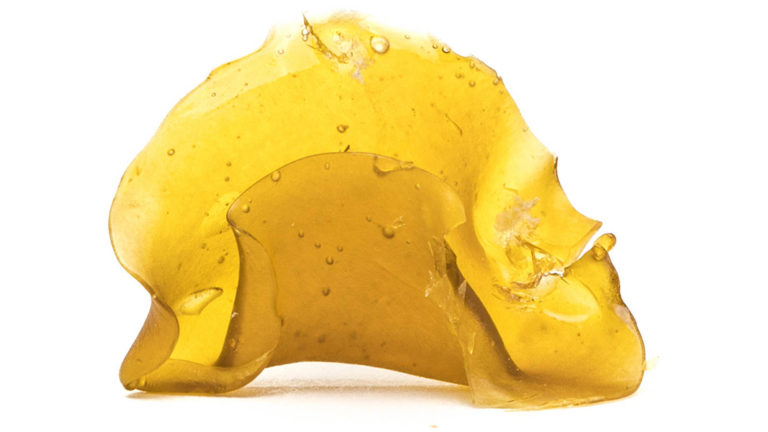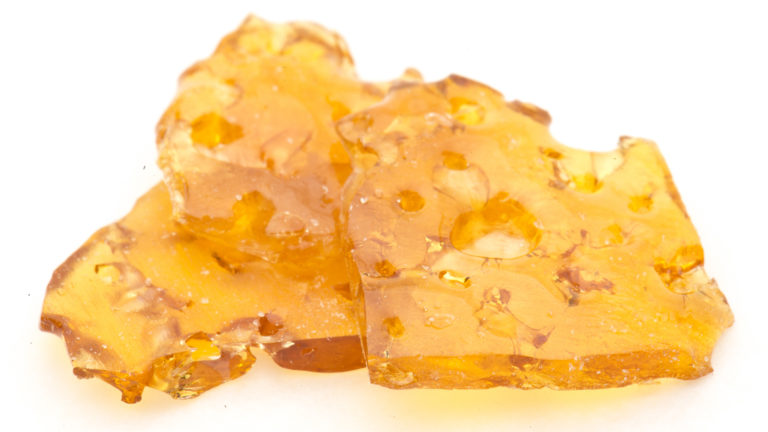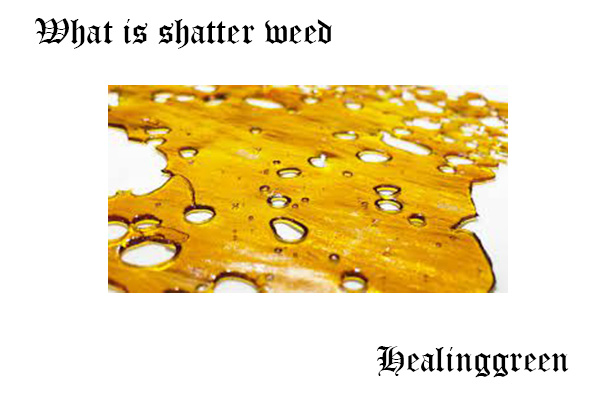Pot smokers looking for a heavier-hitting high are turning to “Shatter,” a weed concentrate that packs up to 80 percent cannabinoid content. Drug officials aren’t sure how to deal with the drug, a smooth, glassy substance that’s significantly more potent when smoked but is still, ultimately, a marijuana derivative and thus not particularly unsafe.
Shatter is just one form of dabs, the catch-all term for marijuana concentrates produced by extracting cannabinoids like THC and CBD, the plant’s psychoactive chemicals. Other well-known forms include “budder,” which has a creamier, wax-like consistency, and oils, which are golden and honey-like. For all dabs, extraction involves running a solvent — usually butane, carbon dioxide, or propane — through marijuana buds to pull out the cannabinoids, then evaporating the solvent and gathering the resins left behind.
What is shatter?
Shatter is a brittle, glass-like cannabis extract named for its breakability. It has a glassy appearance and tends to break, or shatter, like glass when snapped in two. Like other cannabis concentrates, shatter is a favorite among dabbing enthusiasts. Properly cured shatter comes from a careful and unrushed manufacturing process.

Shatter is an extract, which is a type of cannabis concentrate produced using a combination of cannabis plant matter and solvents. The appearance of shatter weed is typically translucent, though its coloring can range from bright, honey-like amber to a darker yellow shade like corn oil.
Visually, all shatters may appear to have the same consistency, but the physical texture of individual marijuana shatter products can vary from extremely brittle to a taffy-like snap-and-pull quality, leading some to categorize the latter as pull ‘n’ snap. This inconsistency gives some insight into an individual product’s concentration of cannabinoids.
Specifically, shatter that’s higher in tetrahydrocannabinol (THC) will result in a product that has more sap or oil while a product with a higher level of tetrahydrocannabinolic acid (THCA) will be much more brittle and glass-like by comparison. At room temperature, THC concentrate is a sappy oil, giving shatter with a high THC content a more viscous consistency, whereas THCA is solid at room temperature, yielding a fragile concentrate that’s easier to break apart.
What is CBD shatter?
While shatter is most well known for its high levels of THC, many concentrate makers also produce a variety shatter that is high in cannabidiol (CBD) and very low in THC. In general, CBD shatter is geared primarily toward consumers who want the potential medicinal and therapeutic benefits of the cannabis plant without the intoxicating effects of THC.

Because CBD shatter contains a concentrated, potent dose of CBD, it can be an excellent option for medical marijuana patients and other consumers interested in the potential health and wellness benefits of the cannabinoids and terpenes in cannabis concentrates. Just be sure to purchase shatter that has been manufactured specifically to contain high levels of CBD and low levels of THC, as this will maximize any therapeutic effects of CBD while minimizing the intoxication of THC.
What’s the history of shatter?
Shatter is a relatively new addition to the history of cannabis consumption. Its roots can be traced to the age-old practice of hashish production. By the late 1990s the process of modern cannabis concentrate production was being refined, and what we’d now consider shatter was first produced.
In 1989 author D. Gold published a second edition of his 1973 book, Cannabis Alchemy: The Art of Modern Hashmaking, which included the first full explanation of how to make hash. A year later, in 1990, medical technologist Michael Starks also published a second edition of his 1977 book, Marijuana Chemistry: Genetics Processing and Potency, with a detailed account of the hash manufacturing process.
By the late 1990s, Canadian cannabis maker BudderKing first marketed budder and shatter, with its products hitting the shelves of dispensaries in 2003. The techniques for producing these products were published in Cannabis Culture magazine in 2005 and by the 2010s, shatter emerged as a staple method of cannabis consumption. Its popularity lead many dabbers and concentrate users to proclaim, “If it doesn’t shatter, it doesn’t matter.”
What Is a Concentrate?
Cannabis concentrates like shatter, wax, honey oil, and others provide a different and much more powerful high than basic flower. They’re essentially cannabis that has been put through a process to extract and concentrate the desired chemicals – namely, cannabinoids such as THC (tetrahydrocannabinol) and CBD (cannabidiol), as well as terpenes.
For recreational consumers, the ideal finished concentrate is potent and packed with high-inducing THC. When it comes to shatter, THC levels can run as high as 80%. Some cannabis oil concentrates are very low in THC and high in CBD; shatter with higher CBD ratios is often used for medicinal purposes.
How Are Shatter Marijuana Concentrates Made?
Making shatter requires a solvent such as CO2 or butane. To make butane hash oil (BHO), CO2 shatter, or wax, manufacturers put cannabis plant material in a holding container and force a solvent through it order to extract the cannabinoids.
The process is a rather dangerous one that requires knowledge about how to properly handle the chemicals being used. Emboldened by do-it-yourself YouTube videos, novice BHO manufacturers have caused explosions, fires, and injuries by using improper equipment and extraction methods. CO2 extraction is a safer process that uses more natural ingredients.
After the extraction process, the result is an extremely strong substance that has much more THC than traditional cannabis. Its consistency varies: a cannabis concentrate can be an oil, a soft, smooth substance known as budder, a malleable, crystallized material known as wax, or shatter—an amber-colored, glasslike form of hash oil.
These are all commonly known as “dabs,” and the typical method for smoking these materials is known as “dabbing.”
Wax vs Shatter: What’s the Difference?
With all of the various marijuana concentrates available, many people are left wondering the difference between wax or crumble vs shatter. The main difference is the consistency. When it comes to shatter BHO and other concentrates, the finished result can be runny and gooey (honey oil), waxy (wax and crumble), taffy-like (pull-and-snap), or hard and glasslike (shatter).
The final consistency of concentrates depends on the flower material the manufacturers used, with some marijuana strains rendering softer concentrates and others hardening up rather easily. Manipulation and processing can also create shatter vs crumble, but regardless their form, all concentrates end with high levels of cannabinoids, making them incredibly potent.
Experienced BHO manufacturers put shatter through a purification process that strips out the wax, fat, terpenes, butane, and other materials that remain in other concentrates. This process takes out a lot of the flavor that remains with other BHO concentrates but makes the final product a lot stronger.

You can buy Shatter at the legal recreational marijuana shop down the street from where I live. It’s messy, smelly and more trouble than it’s worth to smoke, imo. The potency of the flower and vape cartridges is as strong as you can handle, believe me and you don’t have to bother with delicate glass pipes and propane torches like some grimey meth head! lol I actually prefer the THC ‘Inhalers'(like they use for asthma) they have out now. No smoke or smell at all! 10 mg of pure THC from each draw, 150 draws per canister.